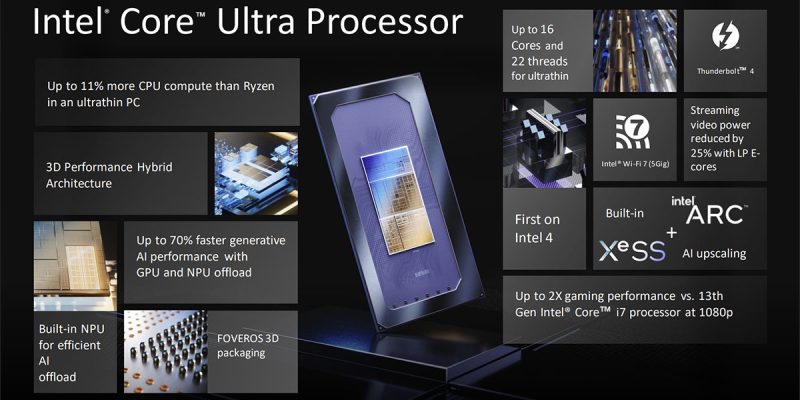
Intel Core Ultra “Meteor Lake”: efficiency and AI-focused, with new Foveros packaging
The much-awaited Intel Core Ultra “Meteor Lake” processors have just dropped, featuring a new Foveros 3D “tile” packaging that combines modular tiles manufactured on various nodes to optimize performance, efficiency and cost. Unlike previous generations where Intel mainly focused on raw compute performance gains, this “14th Gen” Intel Core Ultra prioritizes efficiency and AI performance gains over almost everything else.
CPU: New core architectures on Intel 4
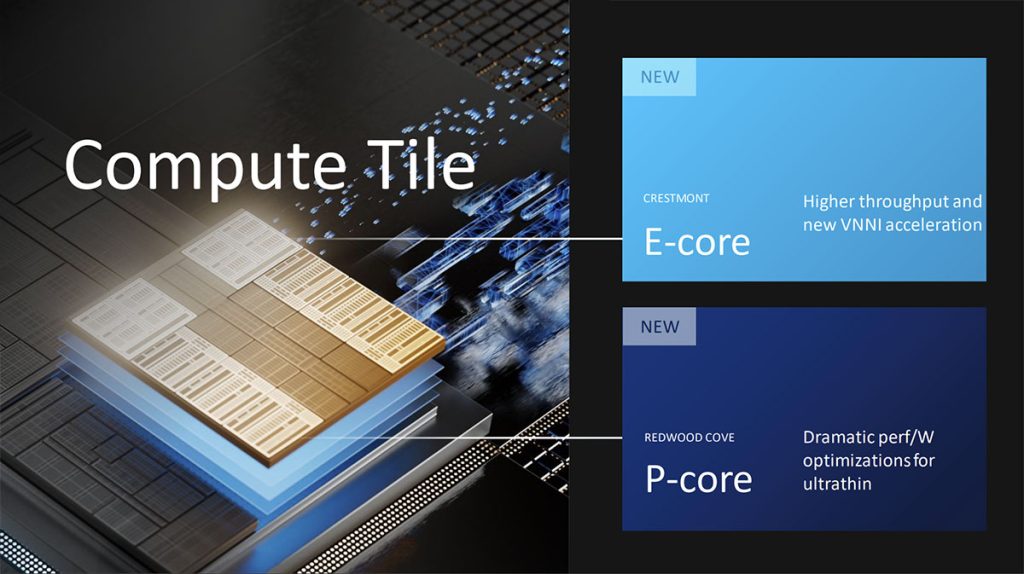
At the heart of Meteor Lake are new Redwood Cove P-cores and Cresmont E-cores, manufactured on the cutting-edge Intel 4 node. However Intel appears to have kept pretty mum about the raw performance gains of these new architectures, but did brag about improved efficiency, promising up to a massive 25% reduction in power consumption compared to 13th Gen Intel Core parts.
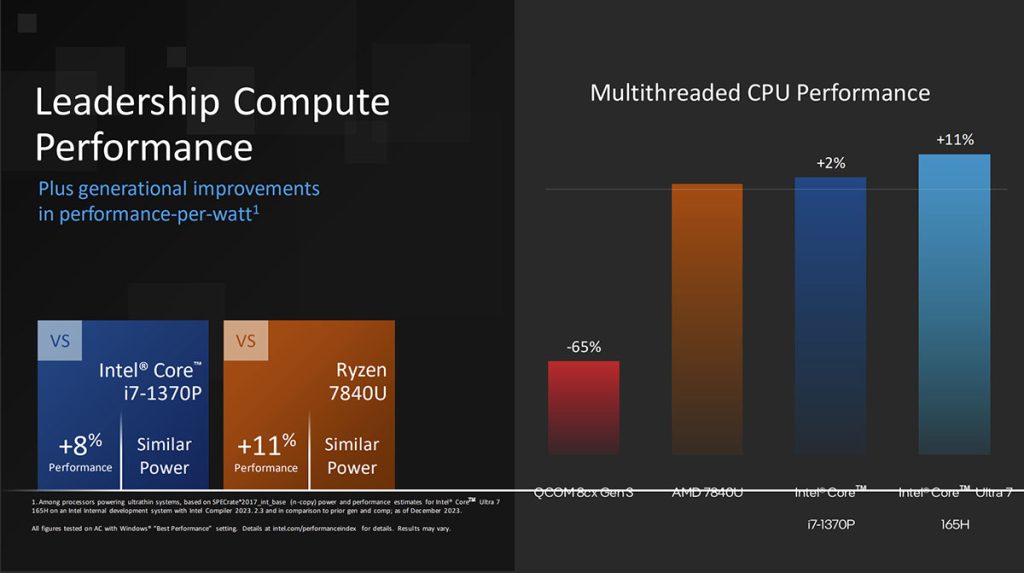
Also new are the two LP E-core which reside in the SoC tile to handle even lower intensity workloads than the E-cores in the compute tile to further enhance the overall power efficiency. This SoC tile is manufactured on an older, more cost-effective TSMC 6nm node. Of course, Intel Thread Director will play an even more important role now, with so many different core types to assign workloads to.
Intel Arc graphics: 2x faster, 2x better efficiency

Intel is finally swapping out the ancient Intel Iris Xe integrated graphics for Intel Arc, which is based on the Arc Xe-LPG architecture. You get the full suite of modern graphics features here with Intel Core Ultra like hardware-accelerated raytracing, mesh shading, AI upscaling with XeSS and AV1 encode and decode.

Intel is proud to claim up to 2x the performance of Iris Xe graphics and also double the performance-per-watt, which is always good to see in a mobile-oriented product. Like Intel’s discrete graphics solutions, the GPU tile here is manufactured by TSMC, on their 5nm node. And as with previous generations, Intel Arc graphics will not be available on all Intel Core Ultra processors, and OEMs will need to pair it with at least 16GB of dual-channel memory to be eligible for Intel Arc graphics.
Intel AI Boost: 34 TOPs, dedicated NPU
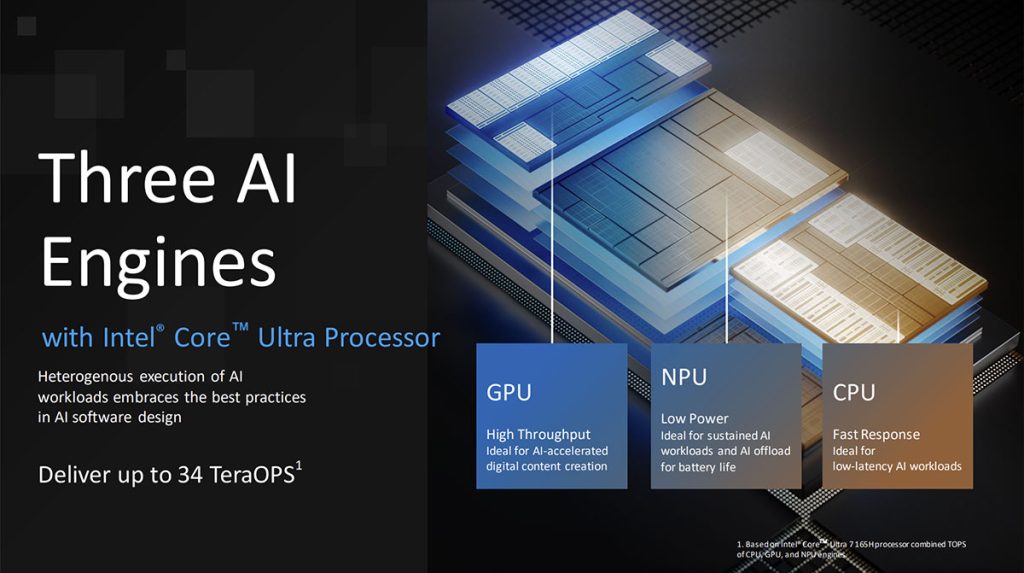
As mentioned earlier, Intel will be throwing down the gauntlet into the AI arena. Intel AI Boost is what Intel is calling their Neural Processing Unit (NPU) in Meteor Lake, and Intel has designed two Gen3 Neural Compute Engines into the SoC tile. Intel will also be harnessing heterogenous AI processing, taking advantage of the CPU, GPU and NPU for different kinds of workloads, i.e. GPU for higher throughput, CPU for responsiveness, and NPU for lower power consumption. In terms of GenAI, Intel claims up to 1.7x improved performance along with 38% lower power consumption in Zoom calls by offloading the workload to the NPU.
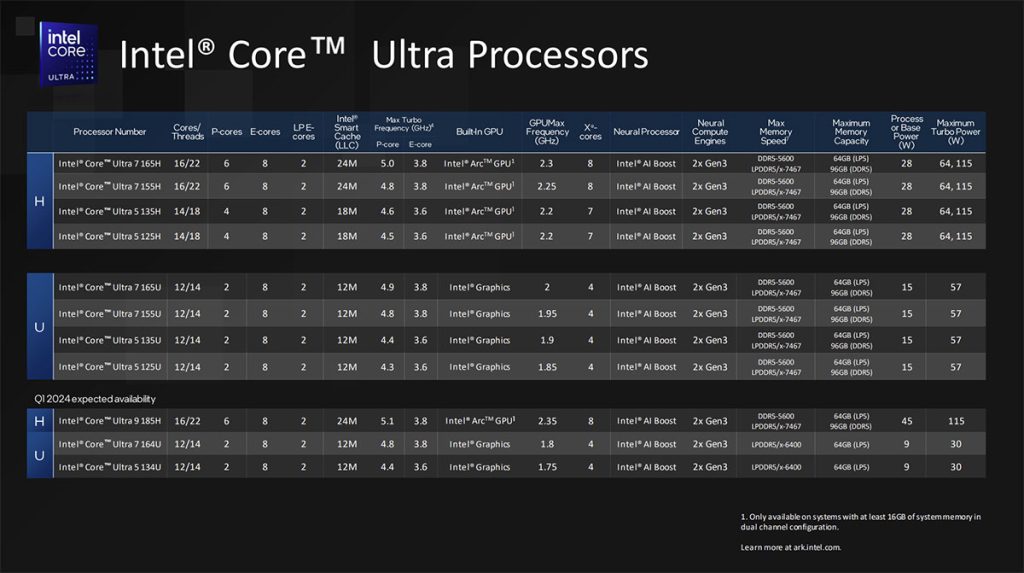
Other niceties include WiFi 7 support, PCIe 5.0 lanes for discrete graphics as well as DisplayPort 2.1 and HDMI 2.1 outputs. A full range of Intel Core Ultra processors featuring anywhere from 14 cores to 12 cores will be available starting today, with some expected to arrive by early next year. What about the laptops? Well, they are available starting today.
ASUS Zenbook 14 OLED: Malaysia’s first Intel Core Ultra-powered laptop?

ASUS has also announced the ultraportable ASUS Zenbook 14 OLED (UX3405) that will feature the Intel Core Ultra processors, and ASUS Malaysia representatives are confident enough to tell us that they “will be the first (if not the first)” to offer Meteor Lake-powered laptops here in Malaysia. We will see whether that turns out to be true! While there are few details in their press note to us, it appears that it will be an ultra-svelte 1.2kg light and 1.49cm thin while also taking a few pages from the Zenbook S 13 OLED‘s sustainability playbook.










